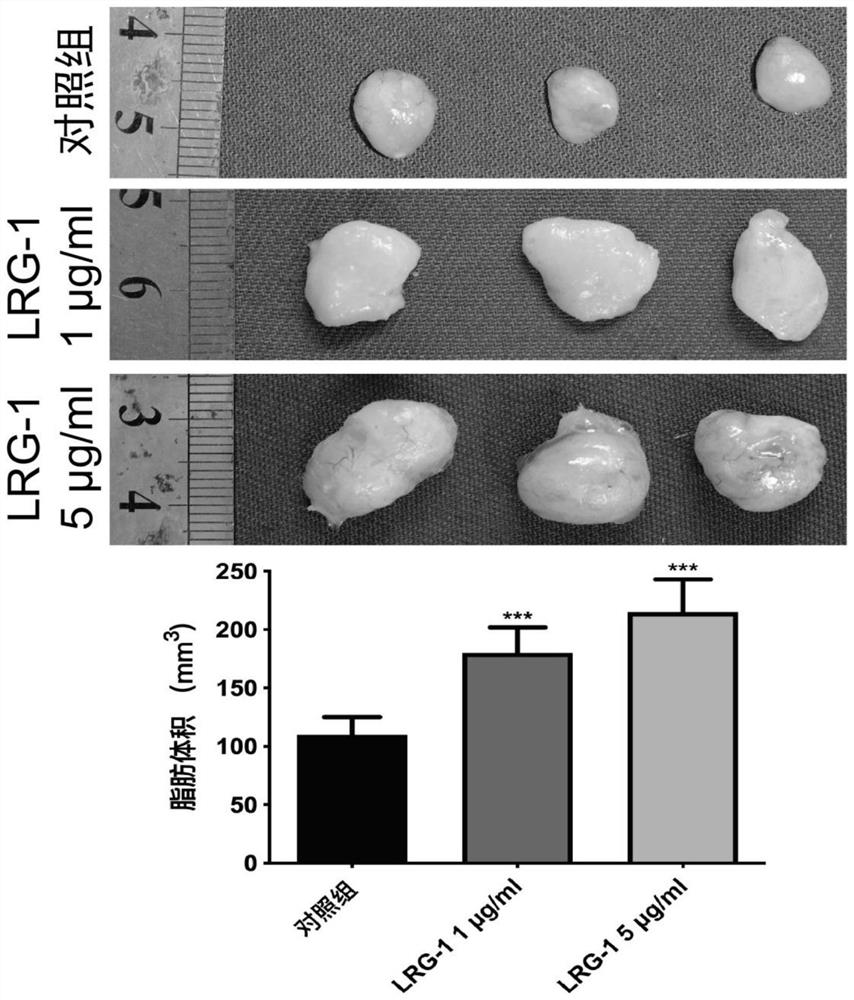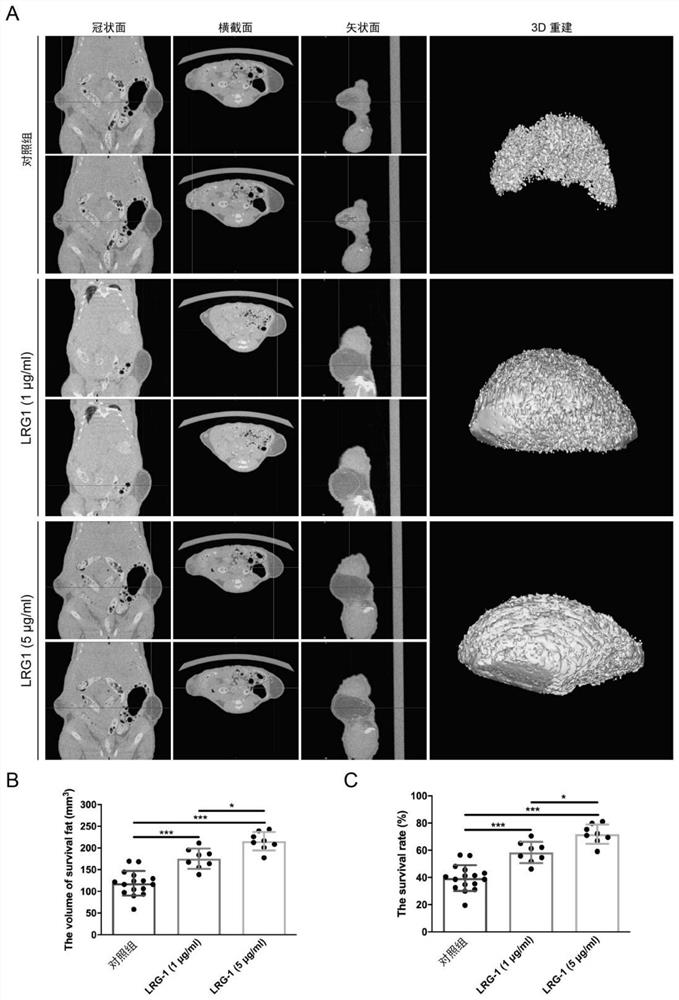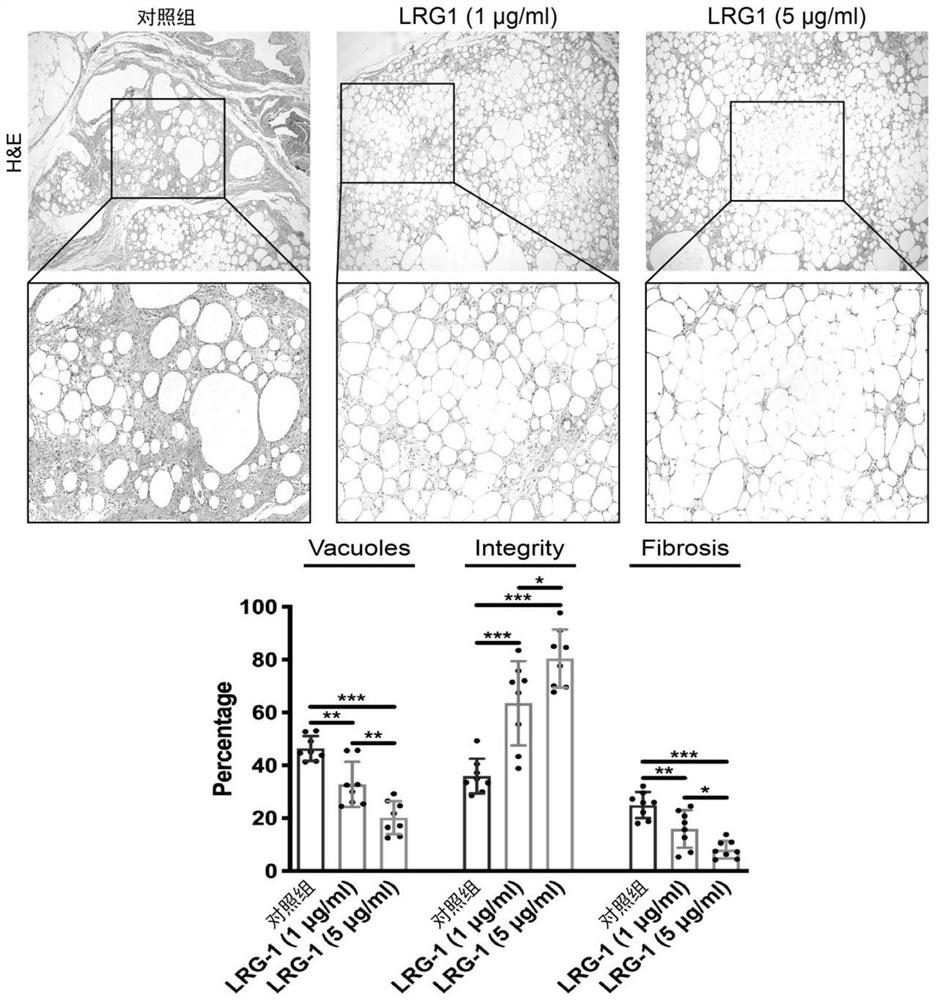Application of LRG1 gene or protein coded by LRG1 gene in preparation of medicine for reducing autotransplantation fat cell apoptosis
A fat cell and autologous transplantation technology, applied in the field of medicine, can solve the problems of poor survival effect of autologous fat transplantation, and achieve the effects of reducing fat cell apoptosis, low synthesis cost and promoting survival.
- Summary
- Abstract
- Description
- Claims
- Application Information
AI Technical Summary
Problems solved by technology
Method used
Image
Examples
Embodiment 1
[0030] Scheme 1: The application of LRG1 gene as a drug target in the preparation of drugs for reducing apoptosis of autologous transplanted adipocytes.
[0031] Scheme 2: The application of the protein encoded by the LRG1 gene as a drug target in the preparation of a drug for reducing the apoptosis of autologous transplanted adipocytes.
[0032] Scheme 3: Application of human LRG1 recombinant protein in the preparation of drugs for reducing apoptosis of autologous transplanted adipocytes.
[0033] Scheme 4: An injection comprising a protein encoded by the LRG1 gene. details as follows:
[0034] 1. Experimental materials
[0035] 1.1 The preparation method of human LRG1 recombinant protein injection is as follows:
[0036] LRG1 recombinant protein was purchased from R&D (7890-LR), dissolved in saline, and prepared into solutions with concentrations of 1 μg / ml and 5 μg / ml, respectively.
[0037] 2. Experimental method
[0038] 2.1 Collection and processing of human fat sam...
PUM
| Property | Measurement | Unit |
|---|---|---|
| Concentration | aaaaa | aaaaa |
| Concentration | aaaaa | aaaaa |
| Concentration | aaaaa | aaaaa |
Abstract
Description
Claims
Application Information
 Login to View More
Login to View More - R&D
- Intellectual Property
- Life Sciences
- Materials
- Tech Scout
- Unparalleled Data Quality
- Higher Quality Content
- 60% Fewer Hallucinations
Browse by: Latest US Patents, China's latest patents, Technical Efficacy Thesaurus, Application Domain, Technology Topic, Popular Technical Reports.
© 2025 PatSnap. All rights reserved.Legal|Privacy policy|Modern Slavery Act Transparency Statement|Sitemap|About US| Contact US: help@patsnap.com



